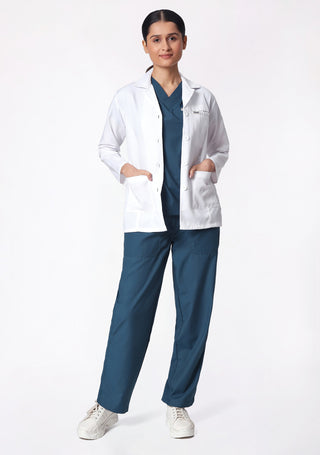Bioassays are indispensable tools in pharmacology, forming the backbone of drug development, from early-stage compound screening to late-stage efficacy testing. By assessing a drug’s potency, efficacy, and safety, bioassays provide critical data that help pharmaceutical companies develop effective and safe medications. Despite their inherent limitations and challenges, advancements in bioassay technologies, including high-throughput screening and predictive models, continue to refine and expand their applications.
Tabular Data:
|
Aspect |
Details |
|
Definition |
Bioassay is a scientific method in pharmacology for assessing the potency, efficacy, and safety of a substance using biological systems (cells, tissues, or organisms). |
|
Importance |
Measures drug potency, safety profile, guides drug discovery, enables biological standardization, and quantifies biological activity. |
|
Types |
- Qualitative (detects presence/absence) - Quantitative (measures response degree) - Direct/Indirect - In Vivo/In Vitro |
|
Methodologies |
Includes dose-response analysis, endpoint measurement, control groups, blinding, randomization, and replication. |
|
Applications |
Drug screening, potency/effectiveness evaluation, pharmacokinetics/dynamics, toxicology, biological standardization. |
|
Challenges |
Biological variability, high cost, limited in vitro to in vivo translation, ethical concerns with animal testing. |
Check out Under scrubs for Men and Womens
Understanding Bioassay in Pharmacology?
In pharmacology, the term bioassay holds a vital place, as it represents a scientific process central to understanding drug efficacy, safety, and potency. Derived from “biological” and “assay,” a bioassay essentially refers to the experimental procedure that uses a living organism, tissue, or cell culture to determine the potency and effect of a substance, particularly a drug. A bioassay evaluates how a drug or substance interacts with biological systems, allowing researchers to measure its effect on various cellular or biochemical pathways.
Importance of Bioassays in Pharmacology
Bioassays play a crucial role in pharmacology for several reasons:
- Measuring Potency: One of the primary purposes of bioassays is to measure the potency of a drug or chemical. Potency refers to the drug's strength or efficacy in producing the desired biological effect, essential for determining appropriate dosages.
- Establishing Safety Profiles: Bioassays can help identify potential side effects and toxicities. Determining a drug's safety profile early on helps in assessing risks versus benefits and informs regulatory approvals and labeling requirements.
- Guiding Drug Discovery: Bioassays serve as the foundation for new drug discovery and design by evaluating compounds’ initial effectiveness. They allow scientists to select the most promising compounds for further study, accelerating the development process.
- Standardization: Bioassays offer a standardized way to compare drugs and biological products. For instance, the World Health Organization (WHO) sets international bioassay standards to ensure consistency in drug potency across global markets.
- Quantifying Biological Activity: Bioassays are also crucial for understanding the biological activity of a substance. They provide insights into the mechanism of action at the cellular or molecular level, shedding light on how drugs exert their effects on living systems.
Types
Bioassays can be classified based on various criteria, such as the nature of the organism used, the complexity of the biological system, or the experimental purpose.
-
Qualitative Bioassays
Qualitative bioassays are designed to detect the presence or absence of a substance’s biological activity. They provide information on whether or not a drug produces a desired effect but do not quantify it. For example, qualitative bioassays might be used to determine whether a new compound has any antimicrobial properties by observing bacterial growth inhibition. -
Quantitative Bioassays
Quantitative bioassays measure the degree of biological response elicited by a substance. They assess the exact potency or concentration of a drug required to produce a specific effect. Quantitative bioassays include dose-response studies, where various concentrations of a drug are tested to see how they influence a biological response, allowing scientists to plot the effects on a dose-response curve. - Direct and Indirect Bioassays
- Direct Bioassays measure the biological activity directly, such as by observing the immediate effect of a drug on cells or tissues.
- Indirect Bioassays measure secondary responses, such as downstream metabolites or signaling molecules, rather than the primary effect. For example, the effect of a drug on enzyme levels might be assessed indirectly by measuring changes in the concentrations of metabolic by-products.
- In Vivo and In Vitro Bioassays
- In Vivo Bioassays involve testing a drug or compound on whole organisms, such as mice or rats. These assays provide a comprehensive understanding of a drug’s effect on the entire biological system, including pharmacokinetics (how a drug is absorbed, distributed, metabolized, and excreted).
- In Vitro Bioassays, on the other hand, are conducted outside living organisms, often in cell cultures or isolated tissues. In vitro assays are easier to control and often provide quicker results, though they may not reflect the full complexity of a drug’s action in a whole organism.
Browse best
Methodologies of Bioassays
Bioassays require meticulous planning and design to ensure reliable results. Below are some commonly used methodologies in bioassay testing:
-
Dose-Response Analysis
Dose-response analysis involves testing different concentrations of a drug and observing its effect on the biological system. This type of analysis is key in determining a drug’s therapeutic index, which defines the range between effective and toxic doses. -
Endpoint Measurement
Endpoints refer to specific parameters that indicate the biological response to a drug. Examples include cell survival rates, changes in enzyme activity, or the release of specific biomarkers. Endpoints should be carefully selected to represent the primary action of the drug on the biological system. -
Control Groups
In bioassay experiments, control groups (untreated or placebo-treated) are essential for comparison. They help establish baseline measurements and allow researchers to determine whether observed effects are due to the drug itself or other external factors. -
Blinding and Randomization
To reduce bias, bioassays often use blinding (where the person conducting the assay does not know which treatment each sample has received) and randomization (assigning samples to different treatment groups at random). These practices ensure that the results are both accurate and replicable. -
Replication and Validation
A single bioassay experiment does not yield conclusive results. Bioassays must be replicated to confirm consistency. Additionally, results should be validated by comparing findings with established standards or reference compounds.
Applications of Bioassays
-
Screening of New Compounds
Bioassays serve as a primary screening method for identifying biologically active compounds from large libraries of synthetic or natural molecules. High-throughput screening (HTS) is a technique used to rapidly test thousands of compounds using bioassays, enabling scientists to focus on the most promising candidates.
-
Evaluating Drug Potency and Efficacy
During preclinical testing, bioassays are used to evaluate the potency and efficacy of a drug, including determining its minimum effective concentration (MEC) and maximum tolerable dose (MTD). These studies are crucial in establishing appropriate dosage guidelines for subsequent phases of development. -
Pharmacokinetics and Pharmacodynamics
Bioassays are central to studying a drug’s pharmacokinetics (how the body processes the drug) and pharmacodynamics (how the drug affects the body). These studies reveal critical data on a drug’s absorption, distribution, metabolism, and elimination (ADME), as well as its mechanism of action. -
Toxicology Studies
Toxicology bioassays help assess the safety of new drugs by evaluating potential adverse effects at varying dosages. Such tests are often conducted in vivo to understand how the drug impacts the entire organism and identify any long-term toxicities. -
Biological Standardization
Bioassays are widely used in regulatory environments for the biological standardization of therapeutic agents. For example, in the development of vaccines, bioassays help standardize doses to ensure that they are safe, effective, and comparable across different batches and manufacturers.












